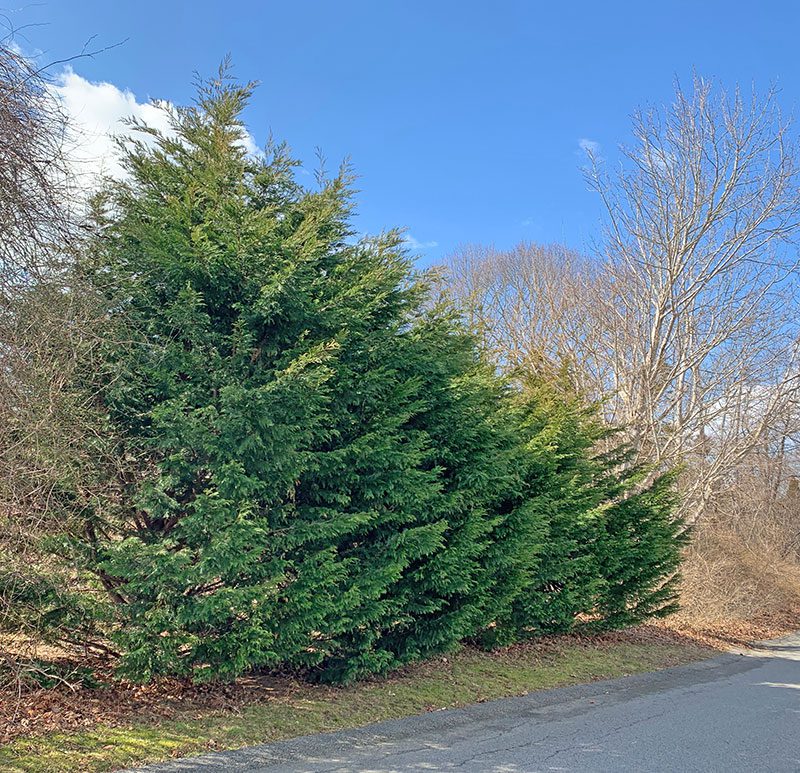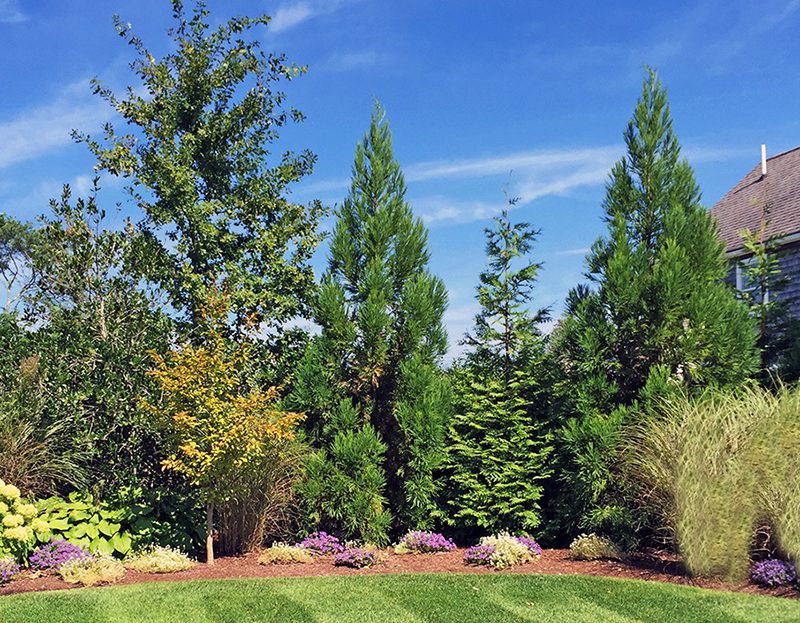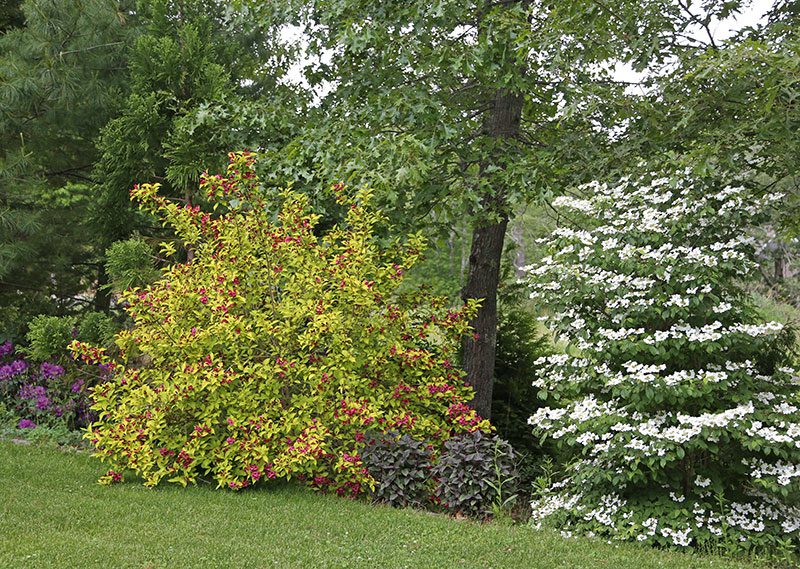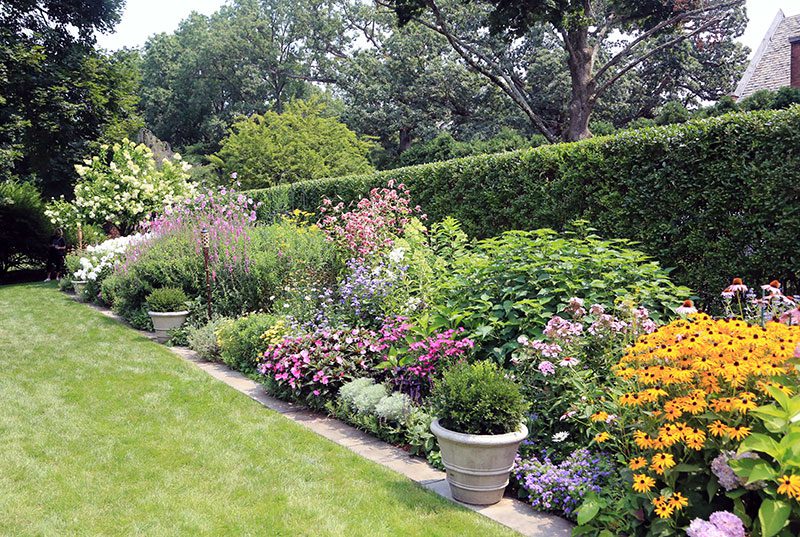Planting A Privacy Screen
Planting A Privacy Screen
When you want more privacy for your Cape Cod property, there are several options that should be considered. Here are some suggestions for plants and designs, and why certain choices might work well for your yard.
- Consider how much sun or shade the area gets, and pick plants that will do well in such conditions. If planted in too much shade some traditional screening shrubs and trees won’t thrive.
- Take the width that a shrub or tree will grow into account before choosing what you’ll place in that area. A screening plant that needs to be sheared because it’s getting too wide is a high-maintenance planting, and eventually it will grow too big anyway. Remember that pruning can sometimes slow a plant down but because pruning always stimulates growth it will never stop the plant from getting larger.
- Unless you’re really wedded to a line of all the same type of plant, plan to use groupings of 3 or 5 evergreens where you need screening the most, and fill in with either other varieties of evergreen or with flowering deciduous plants. This way if an insect or disease comes along that attacks one of the plants you have, you don’t lose the entire screen.
- Place the tallest, fastest growing plants where you need the most coverage, and then put slightly smaller or slower growing plants on each side. Plants usually look best when planted in odd numbers: so a single plant next to a group of three, followed by a single plant next to a group of five, for example.
- If you don’t need height, consider putting in a fence first. Then a selection of flowering and evergreen plants can be placed along the fence to soften it, without those plants needing to grow or fill in quickly.



These plants are good for including in privacy screens:
Evergreens for Sun: Emerald Green arborvitae (thin, moderate rate of growth), Green Giant arborvitae (wide, fast rate of growth), Cryptomeria, weeping Alaska cedar, upright junipers, PJM Rhododendron, upright yews, Hinoki false cypress, Japanese umbrella pine, and holly.
Evergreens for part-shade to shade: Rhododendrons, holly, upright yews, skip laurel, Pieris, and in part-shade, Green Giant arborvitae, inkberry holly.
Taller deciduous plants for Sun: Rose of Sharon, privet, Summer Snowflake Viburnum, Doublefile Viburnum, Limelight Hydrangea, taller varieties of Weigela, Physocarpus ‘Center Glow,’ PG Hydrangea, Forsythia, slender Deutzia, smoke bush, Pinky Winky Hydrangea, and beauty bush including Dream Catcher Kolkwitzia.
Taller deciduous plants for part-shade to shade: Oakleaf hydrangea, bottlebrush buckeye, summersweet, Viburnum varieties, dappled willow, and Nikko Blue Hydrangea.
Finally, don’t forget that larger trees, including deciduous varieties, are good screening components. Kousa dogwood, Forest Pansy Redbuds, Magnolias, Pears and the tree-form of dappled willow are especially useful.

Subscribe To Our Newsletter
Sign up for our weekly email about sales and events.
